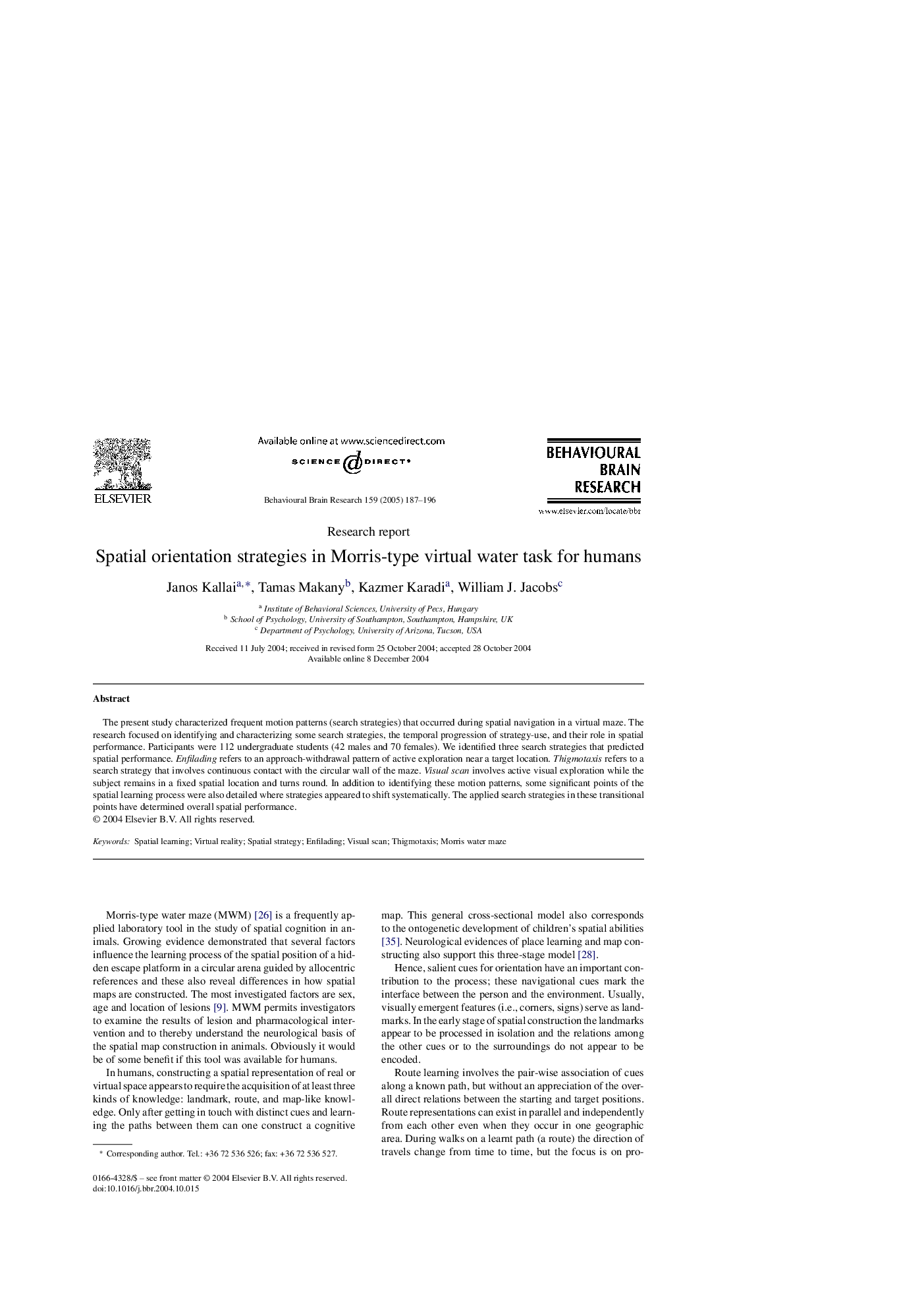| Article ID | Journal | Published Year | Pages | File Type |
|---|---|---|---|---|
| 9406559 | Behavioural Brain Research | 2005 | 10 Pages |
Abstract
The present study characterized frequent motion patterns (search strategies) that occurred during spatial navigation in a virtual maze. The research focused on identifying and characterizing some search strategies, the temporal progression of strategy-use, and their role in spatial performance. Participants were 112 undergraduate students (42 males and 70 females). We identified three search strategies that predicted spatial performance. Enfilading refers to an approach-withdrawal pattern of active exploration near a target location. Thigmotaxis refers to a search strategy that involves continuous contact with the circular wall of the maze. Visual scan involves active visual exploration while the subject remains in a fixed spatial location and turns round. In addition to identifying these motion patterns, some significant points of the spatial learning process were also detailed where strategies appeared to shift systematically. The applied search strategies in these transitional points have determined overall spatial performance.
Related Topics
Life Sciences
Neuroscience
Behavioral Neuroscience
Authors
Janos Kallai, Tamas Makany, Kazmer Karadi, William J. Jacobs,
